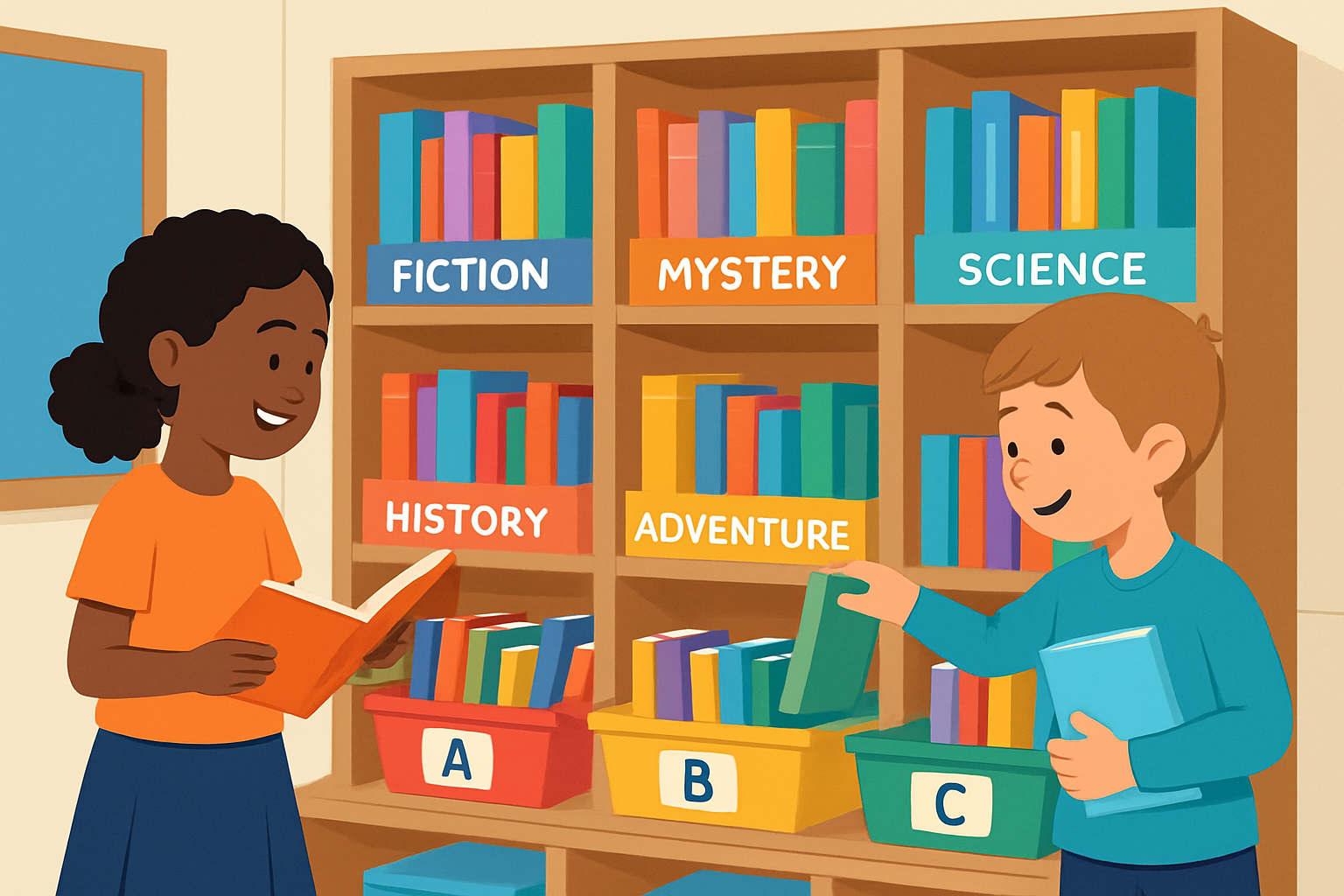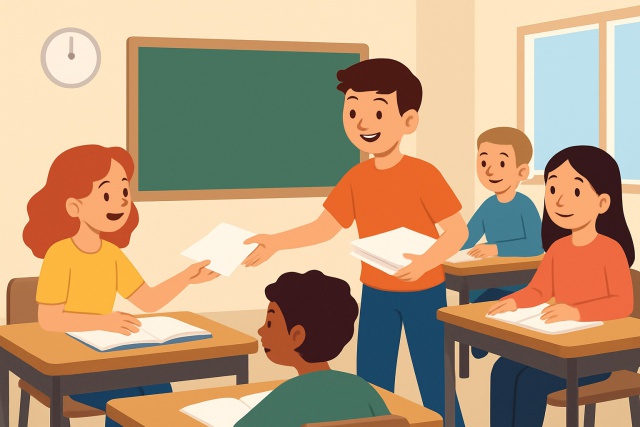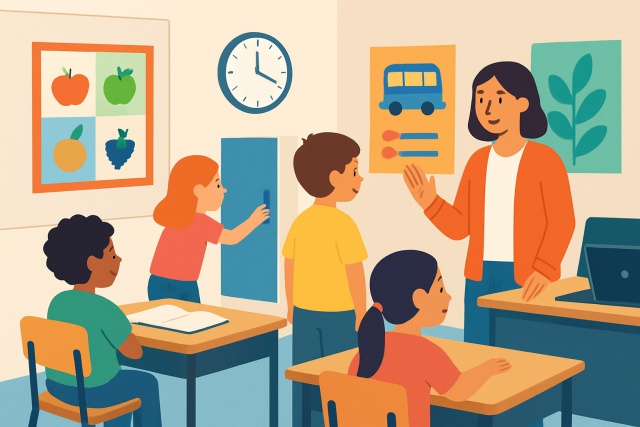Easy Classroom Library Labels for Book Organization

Having a well-organized classroom library is a game-changer for encouraging students to become independent readers and building lasting reading habits. Using clear classroom library labels to keep books neatly sorted and easy to spot helps students feel more at ease picking out their next read without hesitation. This setup also saves teachers from wasting precious minutes rummaging for materials and frees them to focus on what really matters—teaching and connecting with their students.
Classroom library labels offer a simple yet smart way to keep books neatly organized into clear groups. When teachers label shelves, bins or baskets it becomes much easier for students to find and put away books by themselves.
Advantages of Using Labels in Your Classroom Library
Let's face it, a well-labeled classroom library can be a real game changer. Not only does it keep everything neat and tidy, but it also makes life easier for both you and your students. When books have clear, easy to spot labels, kids can dive right in without spending ages hunting for that perfect read. Plus, it quietly teaches organization skills. And if you’re anything like me, a little order in the chaos feels downright miraculous.
- Students get to take the reins on their reading choices which boosts their confidence and independence.
- Organizing books becomes a breeze and trims down clutter making it easier to find what you are looking for.
- Teachers can breathe easier since they’re not stuck sorting or hunting down books.
- Clear categories help students quickly zero in on books by genre or reading level without fuss.
- Labels gently nudge students to take responsibility and make it simpler to return books to their proper spots.
Classroom library labels do more than just keep things organized. They quietly work behind the scenes to meet the needs of a variety of learners. Take ESL students for example. They often find that labels with pictures and simple words make the book selection process less intimidating. Plus, labels clearly mark sections for different reading levels so teachers can support reading groups without having to hover constantly.
What You’ll Need to Put Together Classroom Library Labels
- Label paper or sticker sheets make it easy to jot down or print your labels with no fuss.
- A laminator with laminating sheets helps keep your labels fresh and protected.
- Marker pens or a printer ensure your label text is sharp and easy to read.
- Scissors are your go-to for trimming labels to the right size because nobody likes a sloppy edge.
- Adhesive options like glue sticks, double-sided tape or sticky-back labels keep everything secure where it belongs.
- Containers, baskets or shelves are where you will stick your labels to bring order to the chaos.
You might want to try free printable label templates on plain paper and laminate them yourself to make them last a bit longer. Sticker sheets often pop up at discount or office supply stores, and plenty of markers or pens are surprisingly affordable while still offering a nice splash of bright colors
A Practical and Friendly Guide to Crafting Classroom Library Labels
Start by taking a good look at your classroom library and see if you can spot natural groupings.
Go for the categories that best support your students' reading habits and your teaching goals.
Pick a label style that suits your vibe.
Try free online tools like Canva, Avery Design & Print or Microsoft Word templates to create labels that match your style and the available space.
Classroom life can get messy so print your labels on sticker paper for easy application or use regular paper you plan to laminate for extra durability.
Take your time cutting each label with scissors to keep the edges neat and professional.
Laminate the labels if you want them to stand up to accidental spills and the hustle of a busy classroom.
Securely attach the labels to baskets, shelves or book containers. Place them where students can spot them easily and reach without a ladder. Finally, show your students how to use and return books according to the labels—building that independent organization muscle is worth every minute.
Some popular free label-making tools that people seem to swear by include Avery's free labeling software, which makes it a breeze to drag and drop elements exactly where you want them. Then there is Canva, known for its treasure trove of customizable templates and clipart that let your creativity run wild. And not to forget plain old Google Docs—for those times when you just need straightforward, no-fuss text-based labels.
Simple and Inspiring Labeling Ideas That Just Might Spark Your Creativity
- Use color-coding to clearly separate genres or reading levels making it a breeze for students to spot categories at a quick glance.
- Add simple picture icons on labels to give early or emerging readers a little helping hand so they do not have to wrestle with the text every time.
- Create themed labels that vibe with your classroom decor—think animals or space motifs—to bring a splash of fun and personality.
- Encourage students to get involved by letting them suggest label names or jazz up the labels themselves. It’s a great way to spark a sense of ownership and pride.
- Switch up the labels with the seasons or line them up with current lessons to keep your library feeling fresh, lively and anything but boring.
Adapting label styles for different age groups is pretty straightforward once you get the hang of it. Younger students usually respond better to larger fonts and clear, familiar images that don’t make them scratch their heads. Older students can handle more detailed text and tend to appreciate a wider variety of creative font choices that keeps things interesting without going overboard. Matching colors and themes to the classroom vibe really does the trick in making labels feel more welcoming and personal.
Typical Challenges and How to Tackle Them Head-On
- Labels have a nasty habit of peeling off or getting roughed up after a bit of use, especially if they aren’t laminated to tough it out.
- Students can sometimes forget to slap on the labels or end up stashing books in the wrong spot—happens more than you might think.
- Book categories tend to become outdated or lose their spark pretty quickly as fresh titles roll in or the curriculum takes a new turn.
- When shelf or basket space is tight, fitting bigger or multiple labels feels like trying to fit a square peg in a round hole.
- Striking the right balance between eye-catching label designs and clear, no-nonsense info is often more of a juggling act than you’d expect.
Tackle these little headaches by slapping on laminate labels to fend off wear and tear, and make it a habit to peek regularly for any peeling or damage. Keep the ball rolling by gently nudging students to use the labels properly and loop them into the upkeep process—it's a great way to build a sense of ownership. Every now and then, freshen things up by swapping out old categories or adding new ones based on what’s in stock and what’s catching the students’ eyes. Opt for labels that are neat and compact, fitting snugly into small spaces.
Keeping Your Classroom Library Labels Fresh and in Tip-Top Shape
Keeping your classroom library labels fresh and up to date really makes sure they stay relevant and do their job well. Doing regular inventory checks is a reliable way to spot missing or misclassified books before they cause a fuss, and student feedback often shines a light on how well those categories are actually working in real life.
- Make it a habit to regularly check inventory so you always know what is on the shelves and tweak your categories whenever things start to feel stale.
- Ask students how categories are organized and whether the labels make sense because their feedback can be a game-changer for usability.
- Refresh labels to match the seasons, upcoming holidays or current study topics. Little touches go a long way.
- Don’t let new arrivals get lost in the shuffle. Put labels on right away so finding them is a breeze.
- Blend the best of both worlds by combining digital tools or apps with physical labels. This combo is great for keeping tabs on book circulation and making reorganization smoother.






